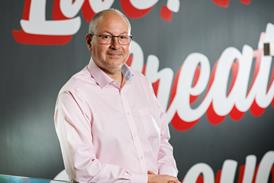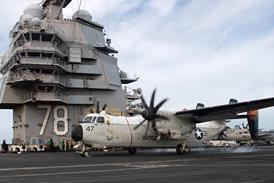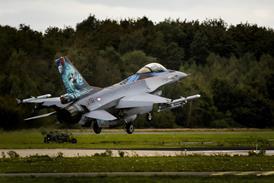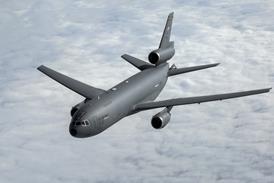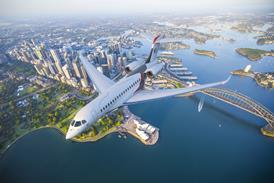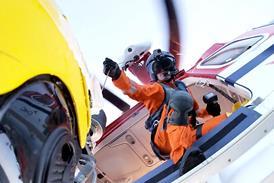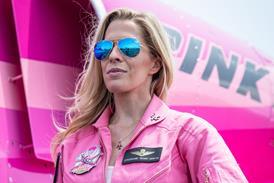AgustaWestland chief executive Giuseppe Orsi tells Paul Derby why investment in advanced technology, maximising customer satisfaction and a strong product range are the providing a solid base for the company’s global growth.
AgustaWestland’s position as a global player has been underlined in recent months with its continuing expansion in the US, a ground-breaking distribution agreement with Oboronprom in Russia and the opening of strategic business headquarters in Japan and Turkey.
“We want to exploit opportunities in emerging markets as well as strengthening our presence where we already have a longstanding leading role,” says AgustaWestland chief executive Giuseppe Orsi. In Turkey, AgustaWestland’s involvement in the ATAK programme to supply the country with a new attack helicopter capability, the T129, is gathering pace with industrial activity under way.
“This programme is a new endeavour in AgustaWestland’s partnership with the Turkish armed forces and the Turkish aerospace industry,” says Orsi. “The aim is to build in Turkey a modern helicopter industry to better satisfy the need of the Turkish armed forces while enhancing the technological capability of the overall Turkish defence industry.
“The programme became effective in early June. We will produce the first five out of 50 helicopters and the first T129 helicopter will be delivered after 60 months. Deliveries will be carried out by TAI, as the prime contractor responsible for local production and assembly, through to 2018.”
The T129 will feature avionics and weapon systems designed and produced indigenously with the mission computer and targeting, navigation, communication and electronic warfare systems being developed by Turkish defence company Aselsan. The new engine, automatic flight control system and air vehicle monitoring system will be integrated by AgustaWestland.
AgustaWestland is taking the same approach in Japan where a new business base will target requirements including training, law enforcement and homeland security, search and rescue, utility as well as commercial applications.
It is the agreement with Russia’s Oboronprom and Loyd’s Investments, announced in May, which perhaps offers the most intriguing possibilities for the business, opening up a major new market. The deal involves the initial acquisition of AgustaWestland civil helicopters valued at €450 million (£360m) through to 2012, which will be supported by a number of maintenance centres.
Orsi says the relationship could evolve over time: “In the next three to four years this agreement will be well advanced with a growing number of our civil helicopters flying in the region. We envisage this co-operation evolving into a joint production agreement for an AgustaWestland civil model in Russia.”
In the US, the expansion of AgustaWestland’s Philadelphia operation to include a second final assembly line for the AW139 is based on demand in the Americas, says Orsi: The decision to expand this facility highlights our growing presence in the United States and the Americas and our commitment to invest in the region.
“The US market is and will remain at the centre of our global strategy. It is also about providing total capability solutions rather than mere platforms. We have orders for more than 350 AW139 helicopters worldwide and more than 25% of them are in the Americas,” Orsi says.
 |
|---|
Technological innovation will play an increasing role in the future success of the organisation, according to Orsi. In the first six months of 2008 the UK Ministry of Defence took delivery of two AW101 Merlin Mk3As equipped with BERPIV main rotor blades, offering additional lift, speed and range. It is the integration of technologies such as this that Orsi believes will drive growth.
“We have joint leadership of the helicopter part of the European Clean Sky programme to introduce new green technologies and reduce emissions. At the same time we continue to progress programmes such as Future Lynx, AW149, BA609 and VH-71. All these aircraft will feature advanced technologies,” he says.
“We recognise that technology for its own sake is not the answer. All the advancements are aimed at bringing us closer to both our existing and potential new customers – to better meet their needs. This strategy has proved a winning one. We now see growing business opportunities in the world marketplace in the years ahead.”
Orsi sees the company’s leadership on Clean Sky as evidence of its commitment to invest in greener technologies. The investment is aimed at reducing impact on the environment in all phases of the product life-cycle from manufacturing, through operation and on to disposal. “Some of these solutions have already been implemented in our product range. We are doing so on the one hand by introducing new technologies in conventional rotorcraft and, on the other hand, by developing revolutionary solutions through the tiltrotor and tiltwing concepts which will change the way we will fly in the future.”
Orsi believes the current strong market demand places a responsibility on manufacturers to assess operational availability as well as simply production capacity: “We are working to increase our production rate, which includes enhancing the production process in the existing assembly lines as well as the opening of new production and assembly lines in key markets.
“However, once the helicopters are delivered to customers, we want to be sure they can fly them anytime they need to. That is why product support services are becoming ever more important to us and we are devoting growing efforts to better serve our customer base.
“Clear evidence of this can be found in the brand new logistics centre located in Lonate Pozzolo in Italy and the increasing number of service stations worldwide. On the military side of the business, the success of the integrated operational support schemes is generating noteworthy benefits to our customers. These are currently being implemented in the UK (IMOS and SKIOS for the AW101 and the Sea King respectively), Italy (PLS for the NH90) and Denmark.”
Looking at future military prospects, AgustaWestland hopes to build on the success of the VH-71 as the cornerstone of the next US Presidential helicopter fleet, by winning the protracted CSAR-X competiton to provide a combat search and rescue aircraft for the US Air Force.
As with the Presidential contest, AgustaWestland is teamed with prime contractor Lockheed Martin under the HH-71 banner. Orsi says: “The HH-71 team is very confident in the strength of our proposal and the level of attention it is being given by the Air Force. The HH-71 provides the lowest risk, best value and best fit for the US Air Force CSAR mission and the war fighter. We are confident the USAF will select the best and most capable aircraft for the task.
Source: Flight International

